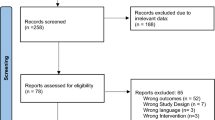Abstract
Inappropriate emergency admissions create overcrowding and may reduce the quality of emergency care. In Italy, overcrowding is further exacerbated by patients who use emergency admissions as a shortcut to avoid the general practitioner (GP) gateway. In this paper, we investigate access to emergency departments (EDs) by patients with non-severe medical conditions and their willingness to wait. Population data for ED accesses in Liguria (an Italian administrative region) in 2016 were used to estimate the number of strategic accesses and waiting time elasticities of low-severity patients. Our results show that the practice of using EDs to skip gatekeeping is a serious problem. The percentage of patients who engage in such practice vary from 8.7 to 9.9% of non-urgent patients; they generally prefer to access more specialized hospitals, especially during weekdays, when GPs are available, but hospitals run at full capacity. Strategic patients are usually much younger than average. From a policy point of view, our results show that long waits may discourage “genuine” patients rather than strategic ones. It is necessary to develop a system to improve access to patients mainly requiring specialist care, along with enhancing the management of diagnostic examinations through primary care.
Similar content being viewed by others
Notes
According to the definition provided by the Italian Ministry of Health, a PS provides diagnostic assessments and all required interventions. Moreover, for the most complex cases, a PS provides all necessary interventions for the patient’s stabilization, and when required, it guarantees the patient’s transportation to another hospital that can provide specialized services. DEAs, in addition to the services provided by a PS, also provide observation, short hospitalization, and resuscitation, and diagnostic–therapeutic interventions of general medicine, general surgery, orthopedics and traumatology, and cardiology with intensive cardiological therapy unit. Furthermore, they include laboratory services and microbiological analysis, imaging diagnostics, and transfusions. DEAs also provide cardiac surgery, neurosurgery, neonatal intensive care, vascular surgery, and thoracic surgery.
We focus on the middle days of the week (Tuesday, Wednesday, and Thursday) when accesses by tourists are less frequent.
References
Cremonesi, P., di Bella, E., Montefiori, M., Persico, L.: The robustness and effectiveness of the triage system at times of overcrowding and the extra costs due to inappropriate use of emergency departments. Appl. Health Econ. Health Policy 13(5), 507–514 (2015)
Vedovetto, A., Soriani, N., Merlo, E., Gregori, D.: The Burden of inappropriate emergency department pediatric visits: why Italy needs an urgent reform. Heal. Serv. Res. 49(4), 1290–1305 (2014)
David, G., Gunnarsson, C., Saynisch, P.A., Chawla, R., Nigam, S.: Do patient-centered medical homes reduce emergency department visits? Heal. Serv. Res. 50(2), 418–439 (2015)
Montefiori, M., di Bella, E., Leporatti, L., Petralia, P.: Robustness and effectiveness of the triage system in the pediatric context. Appl. Health Econ. Health Policy 15(6), 795–803 (2017)
McWilliams, A., Tapp, H., Barker, J., Dulin, M.: Cost analysis of the use of emergency departments for primary care service in Charlotte. North Carolina. North Carolina Med. J. 72(4), 265–271 (2011)
Billings, J., Parikh, N., Mijanovich, T.: Emergency department use in New York City: a substitute for primary care? Issue Brief (Commonw. Fund.) 433, 1–5 (2000)
Billings, J., Parikh, N., Mijanovich, T.: Emergency room use: the New York Story. Issue Brief (Commonw. Fund.) 434, 1–11 (2000)
Fishman, J., McLafferty, S., Galanter, W.: Does spatial access to primary care affect emergency department utilization for nonemergent conditions? Health Serv. Res. 53(1), 489–508 (2018)
Levaggi, R., Montefiori, M.: Definition of a prospective payment system to reimburse emergency departments. BMC Health Serv. Res. 13, 409 (2013). https://doi.org/10.1186/1472-6963-13-409
Goodacre, S., Webster, A.: Who waits longest in the emergency department and who leaves without being seen? Emerg. Med. J. 22(2), 93–96 (2005)
Botelho, A., Dias, I.C., Fernandes, T., et al.: Overestimation of health urgency as a cause for emergency services inappropriate use: Insights from an exploratory economics experiment in Portugal. Health Soc Care Community 27, 1031–1041 (2019). https://doi.org/10.1111/hsc.12720
Coster, J.E., Turner, J.K., Bradbury, D., Cantrell, A.: Why do people choose emergency and urgent care services? A rapid review utilizing a systematic literature search and narrative synthesis. Acad. Emerg. Med. 24(9), 1137–1149 (2017)
Li, D.R., Brennan, J.J., Kreshak, A.A., Castillo, E.M., Vilke, G.M.: Patients who leave the emergency department without being seen and their follow-up behavior: a retrospective descriptive analysis. J. Emerg. Med. 57(1), 106–113 (2019)
Sivey, P.: Should I stay or should I go? Hospital emergency department waiting times and demand. Health Econ. 27(3), e30–e42 (2017)
“Atto di intesa tra Stato e Regioni di approvazione delle Linee Guida sul sistema di emergenza sanitaria in applicazione del decreto del Presidente della Repubblica 27 marzo 1992. (GU Serie Generale n.114 del 17-05-1996),” Gazz. Uff., 114 del 17 (1996)
Allen, L., Cummings, J., Hockenberry, J.: Urgent care centers and the demand for non-emergent emergency department visits (January 2019). NBER Working Paper No. w25428. Available at SSRN: https://ssrn.com/abstract=3315228
Acknowledgements
The authors would like to thank ALISA (Azienda Sanitaria Regione Liguria) for their invaluable cooperation in providing the data. We would also like to thank the two anonymous reviewers for thier comments, which greatly improved the paper. The usual disclaimer applies.
Author information
Authors and Affiliations
Corresponding author
Ethics declarations
Conflict of interest
The authors declare that they have no conflict of interest.
Additional information
Publisher's Note
Springer Nature remains neutral with regard to jurisdictional claims in published maps and institutional affiliations.
Rights and permissions
About this article
Cite this article
Levaggi, R., Montefiori, M. & Persico, L. Speeding up the clinical pathways by accessing emergency departments. Eur J Health Econ 21, 37–44 (2020). https://doi.org/10.1007/s10198-019-01107-5
Received:
Accepted:
Published:
Issue Date:
DOI: https://doi.org/10.1007/s10198-019-01107-5
Keywords
- Clinical pathway
- Emergency department
- General practitioner
- Inappropriate emergency admission
- Specialist care
- Strategic patient behavior




